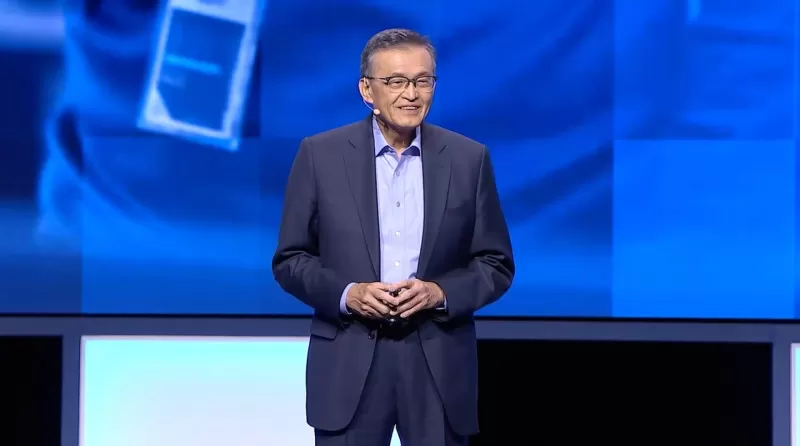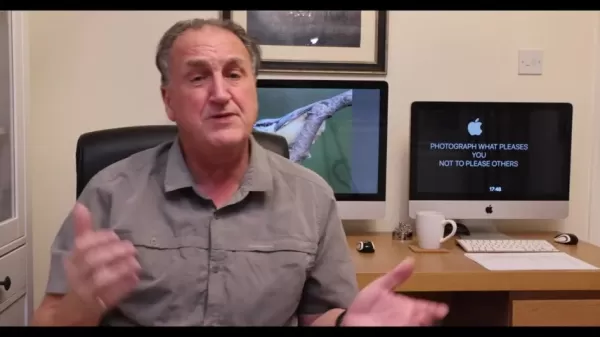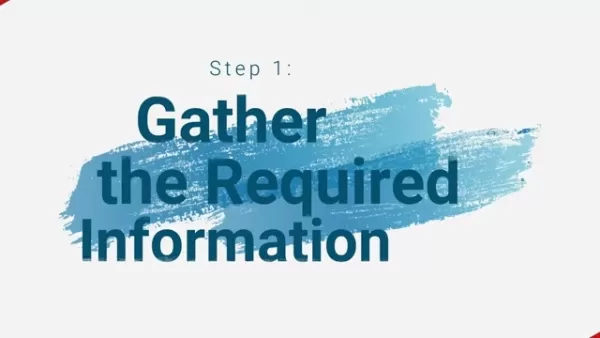Intel's New CEO Promises to Operate Chipmaker Like a Startup From Day One

On Monday, Intel's newly appointed CEO, Lip-Bu Tan, who had only been in the role for 15 days after taking over from Pat Gelsinger, shared his vision for revitalizing the company. Speaking at Intel Vision in Las Vegas, an annual gathering for the company's customers and partners, Tan stressed the need for a cultural shift, promising to manage Intel "as a startup, on day one."
Tan acknowledged that Intel had drifted from its engineering roots over the years. "Intel has lost some of this talent over the years," he noted. "I want to regroup the talent and attract some of the new talent." He emphasized the necessity of this cultural transformation to "pull together strong teams to correct the past mistakes and start to earn your trust."
In his speech, Tan didn't shy away from Intel's recent struggles. It's widely recognized in the industry that Intel has seen a significant decline in market share to competitors like AMD and has lagged behind Nvidia in the AI race. "It has been a tough period for quite a long time for Intel," Tan admitted. "It was very hard for me to watch its struggle; I simply cannot stay on the sideline knowing that I could help turn things around."
Addressing the audience directly, Tan expressed a commitment to improvement. "You deserve better, and we need to improve -- and we will," he stated, urging attendees to provide "brutally honest" feedback, which he believes is crucial for progress.
Tan also outlined specific objectives, including bolstering Intel's financial health, which has been weakened by declining profits and the suspension of dividend payments. More critically, he discussed the need to innovate Intel's chip "architecture," a key term in the semiconductor industry that refers to the arrangement of transistors to address specific challenges. Nvidia has surpassed Intel's x86 architecture with its GPUs, which are better suited for the AI era.
To stay competitive, Tan said Intel must "accelerate development of [a] new compute architecture platform" to leverage AI and enhance performance and efficiency. This would require a fundamental shift in how Intel approaches hardware design. Traditionally, Intel designed hardware first and then developed software to fit. Tan proposed flipping this model, starting with the problem and the workloads, then designing the chip accordingly. He called this a "software 2.0 mentality," drawing from his experience in the startup and software sectors.
Before joining Intel's board two years ago—a position he resigned shortly before Gelsinger's departure—Tan was a venture capitalist and CEO of Cadence Design Systems. He took over Cadence when its sales were struggling and led the company for 15 years. Reflecting on his time at Cadence, Tan shared a lesson from soliciting direct customer feedback. "When I took over [at Cadence], I had one major customer review, and I asked them to grade our products," he recalled. The feedback was harsh, with many products receiving low grades, which was a humbling experience for Tan, who had never received less than a B during his academic career at MIT. However, this candid feedback helped Cadence achieve significant revenue growth.
Tan's approach to Intel's turnaround is straightforward: "Under-promise and over-deliver," he stated, emphasizing his commitment to exceeding expectations. He also highlighted the importance of Intel's manufacturing and foundry business, noting a new customer for whom Intel will produce chips, competing against industry leader Taiwan Semiconductor Manufacturing. Drawing from his Cadence experience, Tan emphasized the need to adapt to each customer's unique design methods and styles.
Despite the focus on change, Tan expressed deep respect for Intel and its mission. As a venture capitalist, he had funded numerous chip startups, including successful companies like Credo Technology and Astera Labs, during times when others were hesitant to invest in semiconductor ventures. He described Intel as "an iconic and essential company that is important to the industry and also to the United States."
At one emotional moment, Tan, who is 66, addressed why he took on this challenging role at this stage in his career. "Some of the people [were] asking me, Why take on this job now, at this stage in your career? The answer is very simple: I love this company."
You can watch the replay of Tan's entire speech on the Intel newsroom website.
Get the morning's top stories in your inbox each day with our Tech Today newsletter.
Related article
 Topaz DeNoise AI: Best Noise Reduction Tool in 2025 – Full Guide
In the competitive world of digital photography, image clarity remains paramount. Photographers at all skill levels contend with digital noise that compromises otherwise excellent shots. Topaz DeNoise AI emerges as a cutting-edge solution, harnessing
Topaz DeNoise AI: Best Noise Reduction Tool in 2025 – Full Guide
In the competitive world of digital photography, image clarity remains paramount. Photographers at all skill levels contend with digital noise that compromises otherwise excellent shots. Topaz DeNoise AI emerges as a cutting-edge solution, harnessing
 Master Emerald Kaizo Nuzlocke: Ultimate Survival & Strategy Guide
Emerald Kaizo stands as one of the most formidable Pokémon ROM hacks ever conceived. While attempting a Nuzlocke run exponentially increases the challenge, victory remains achievable through meticulous planning and strategic execution. This definitiv
Master Emerald Kaizo Nuzlocke: Ultimate Survival & Strategy Guide
Emerald Kaizo stands as one of the most formidable Pokémon ROM hacks ever conceived. While attempting a Nuzlocke run exponentially increases the challenge, victory remains achievable through meticulous planning and strategic execution. This definitiv
 AI-Powered Cover Letters: Expert Guide for Journal Submissions
In today's competitive academic publishing environment, crafting an effective cover letter can make the crucial difference in your manuscript's acceptance. Discover how AI-powered tools like ChatGPT can streamline this essential task, helping you cre
Comments (18)
0/200
AI-Powered Cover Letters: Expert Guide for Journal Submissions
In today's competitive academic publishing environment, crafting an effective cover letter can make the crucial difference in your manuscript's acceptance. Discover how AI-powered tools like ChatGPT can streamline this essential task, helping you cre
Comments (18)
0/200
![GregorySmith]() GregorySmith
GregorySmith
 August 21, 2025 at 3:01:19 AM EDT
August 21, 2025 at 3:01:19 AM EDT
Intel's new CEO sounds bold, but running a chip giant like a startup? That's a wild pivot! Curious to see if Tan can shake things up or if it'll just be hype. 🚀


 0
0
![PeterYoung]() PeterYoung
PeterYoung
 August 9, 2025 at 5:00:59 AM EDT
August 9, 2025 at 5:00:59 AM EDT
Intel's new CEO sounds bold, but can he really turn a giant like Intel into a startup? 🤔 Big promises, let's see if he delivers!


 0
0
![WillLopez]() WillLopez
WillLopez
 July 21, 2025 at 9:25:03 PM EDT
July 21, 2025 at 9:25:03 PM EDT
Intel's new CEO sounds like he's ready to shake things up! Running a chip giant like a startup? Bold move, but can they pull it off with all the competition out there? Excited to see where this goes! 🚀


 0
0
![JustinJackson]() JustinJackson
JustinJackson
 April 21, 2025 at 6:39:24 PM EDT
April 21, 2025 at 6:39:24 PM EDT
O novo CEO da Intel parece cheio de energia! 🚀 A mentalidade de startup de Lip-Bu Tan pode mesmo agitar as coisas na Intel. Estou curioso para ver se ele consegue realmente mudar as coisas. Cruzando os dedos! 🤞


 0
0
![EmmaTurner]() EmmaTurner
EmmaTurner
 April 21, 2025 at 6:18:34 PM EDT
April 21, 2025 at 6:18:34 PM EDT
インテルの新CEO、リップ・ブー・タンはエネルギー満ち溢れてる感じ!🚀 スタートアップの精神でインテルを変えるかもしれないね。果たして本当に立て直せるか楽しみだよ。祈ってるよ!🤞


 0
0
![WillCarter]() WillCarter
WillCarter
 April 21, 2025 at 8:33:44 AM EDT
April 21, 2025 at 8:33:44 AM EDT
Новый CEO Intel звучит как человек полный энергии! 🚀 Менталитет стартапа Лип-Бу Тана может действительно встряхнуть Intel. Интересно будет посмотреть, сможет ли он действительно всё изменить. Держу кулаки! 🤞


 0
0

On Monday, Intel's newly appointed CEO, Lip-Bu Tan, who had only been in the role for 15 days after taking over from Pat Gelsinger, shared his vision for revitalizing the company. Speaking at Intel Vision in Las Vegas, an annual gathering for the company's customers and partners, Tan stressed the need for a cultural shift, promising to manage Intel "as a startup, on day one."
Tan acknowledged that Intel had drifted from its engineering roots over the years. "Intel has lost some of this talent over the years," he noted. "I want to regroup the talent and attract some of the new talent." He emphasized the necessity of this cultural transformation to "pull together strong teams to correct the past mistakes and start to earn your trust."
In his speech, Tan didn't shy away from Intel's recent struggles. It's widely recognized in the industry that Intel has seen a significant decline in market share to competitors like AMD and has lagged behind Nvidia in the AI race. "It has been a tough period for quite a long time for Intel," Tan admitted. "It was very hard for me to watch its struggle; I simply cannot stay on the sideline knowing that I could help turn things around."
Addressing the audience directly, Tan expressed a commitment to improvement. "You deserve better, and we need to improve -- and we will," he stated, urging attendees to provide "brutally honest" feedback, which he believes is crucial for progress.
Tan also outlined specific objectives, including bolstering Intel's financial health, which has been weakened by declining profits and the suspension of dividend payments. More critically, he discussed the need to innovate Intel's chip "architecture," a key term in the semiconductor industry that refers to the arrangement of transistors to address specific challenges. Nvidia has surpassed Intel's x86 architecture with its GPUs, which are better suited for the AI era.
To stay competitive, Tan said Intel must "accelerate development of [a] new compute architecture platform" to leverage AI and enhance performance and efficiency. This would require a fundamental shift in how Intel approaches hardware design. Traditionally, Intel designed hardware first and then developed software to fit. Tan proposed flipping this model, starting with the problem and the workloads, then designing the chip accordingly. He called this a "software 2.0 mentality," drawing from his experience in the startup and software sectors.
Before joining Intel's board two years ago—a position he resigned shortly before Gelsinger's departure—Tan was a venture capitalist and CEO of Cadence Design Systems. He took over Cadence when its sales were struggling and led the company for 15 years. Reflecting on his time at Cadence, Tan shared a lesson from soliciting direct customer feedback. "When I took over [at Cadence], I had one major customer review, and I asked them to grade our products," he recalled. The feedback was harsh, with many products receiving low grades, which was a humbling experience for Tan, who had never received less than a B during his academic career at MIT. However, this candid feedback helped Cadence achieve significant revenue growth.
Tan's approach to Intel's turnaround is straightforward: "Under-promise and over-deliver," he stated, emphasizing his commitment to exceeding expectations. He also highlighted the importance of Intel's manufacturing and foundry business, noting a new customer for whom Intel will produce chips, competing against industry leader Taiwan Semiconductor Manufacturing. Drawing from his Cadence experience, Tan emphasized the need to adapt to each customer's unique design methods and styles.
Despite the focus on change, Tan expressed deep respect for Intel and its mission. As a venture capitalist, he had funded numerous chip startups, including successful companies like Credo Technology and Astera Labs, during times when others were hesitant to invest in semiconductor ventures. He described Intel as "an iconic and essential company that is important to the industry and also to the United States."
At one emotional moment, Tan, who is 66, addressed why he took on this challenging role at this stage in his career. "Some of the people [were] asking me, Why take on this job now, at this stage in your career? The answer is very simple: I love this company."
You can watch the replay of Tan's entire speech on the Intel newsroom website.
Get the morning's top stories in your inbox each day with our Tech Today newsletter.
 Topaz DeNoise AI: Best Noise Reduction Tool in 2025 – Full Guide
In the competitive world of digital photography, image clarity remains paramount. Photographers at all skill levels contend with digital noise that compromises otherwise excellent shots. Topaz DeNoise AI emerges as a cutting-edge solution, harnessing
Topaz DeNoise AI: Best Noise Reduction Tool in 2025 – Full Guide
In the competitive world of digital photography, image clarity remains paramount. Photographers at all skill levels contend with digital noise that compromises otherwise excellent shots. Topaz DeNoise AI emerges as a cutting-edge solution, harnessing
 Master Emerald Kaizo Nuzlocke: Ultimate Survival & Strategy Guide
Emerald Kaizo stands as one of the most formidable Pokémon ROM hacks ever conceived. While attempting a Nuzlocke run exponentially increases the challenge, victory remains achievable through meticulous planning and strategic execution. This definitiv
Master Emerald Kaizo Nuzlocke: Ultimate Survival & Strategy Guide
Emerald Kaizo stands as one of the most formidable Pokémon ROM hacks ever conceived. While attempting a Nuzlocke run exponentially increases the challenge, victory remains achievable through meticulous planning and strategic execution. This definitiv
 AI-Powered Cover Letters: Expert Guide for Journal Submissions
In today's competitive academic publishing environment, crafting an effective cover letter can make the crucial difference in your manuscript's acceptance. Discover how AI-powered tools like ChatGPT can streamline this essential task, helping you cre
AI-Powered Cover Letters: Expert Guide for Journal Submissions
In today's competitive academic publishing environment, crafting an effective cover letter can make the crucial difference in your manuscript's acceptance. Discover how AI-powered tools like ChatGPT can streamline this essential task, helping you cre
 August 21, 2025 at 3:01:19 AM EDT
August 21, 2025 at 3:01:19 AM EDT
Intel's new CEO sounds bold, but running a chip giant like a startup? That's a wild pivot! Curious to see if Tan can shake things up or if it'll just be hype. 🚀


 0
0
 August 9, 2025 at 5:00:59 AM EDT
August 9, 2025 at 5:00:59 AM EDT
Intel's new CEO sounds bold, but can he really turn a giant like Intel into a startup? 🤔 Big promises, let's see if he delivers!


 0
0
 July 21, 2025 at 9:25:03 PM EDT
July 21, 2025 at 9:25:03 PM EDT
Intel's new CEO sounds like he's ready to shake things up! Running a chip giant like a startup? Bold move, but can they pull it off with all the competition out there? Excited to see where this goes! 🚀


 0
0
 April 21, 2025 at 6:39:24 PM EDT
April 21, 2025 at 6:39:24 PM EDT
O novo CEO da Intel parece cheio de energia! 🚀 A mentalidade de startup de Lip-Bu Tan pode mesmo agitar as coisas na Intel. Estou curioso para ver se ele consegue realmente mudar as coisas. Cruzando os dedos! 🤞


 0
0
 April 21, 2025 at 6:18:34 PM EDT
April 21, 2025 at 6:18:34 PM EDT
インテルの新CEO、リップ・ブー・タンはエネルギー満ち溢れてる感じ!🚀 スタートアップの精神でインテルを変えるかもしれないね。果たして本当に立て直せるか楽しみだよ。祈ってるよ!🤞


 0
0
 April 21, 2025 at 8:33:44 AM EDT
April 21, 2025 at 8:33:44 AM EDT
Новый CEO Intel звучит как человек полный энергии! 🚀 Менталитет стартапа Лип-Бу Тана может действительно встряхнуть Intel. Интересно будет посмотреть, сможет ли он действительно всё изменить. Держу кулаки! 🤞


 0
0





























